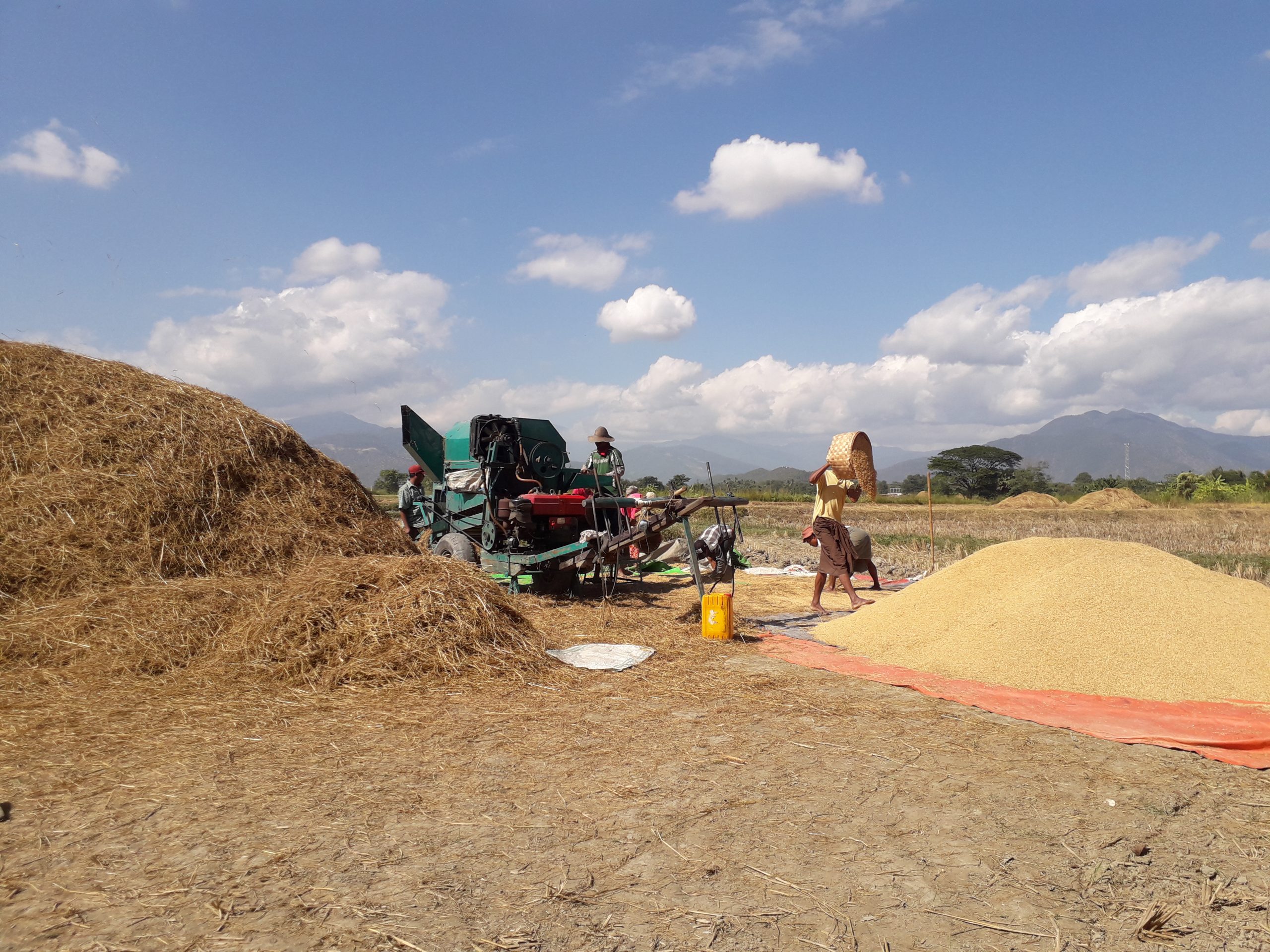
Khine Zin Yu Aung discusses some of her findings on the youth and agricultural work in Myanmar.
I won’t do agricultural work. As I will be a graduate, I will do work which is suitable and worth my educational level. We can rent out our lands to uneducated and landless villagers who can only do agricultural work.
A 20-year old university student in FGD, Sagaing Region
This was the decisive reply I received from a university student in Si Pin Gyi village in Kalay Myo, when I asked if he would be a farmer like his father.[1] He is not the only one who doesn’t want to do agricultural work as his career. Nowadays, to be a farmer is like donkey-work for most youth, especially for the educated ones. In my interviews in the rural areas, interviewees said that they found agricultural work to be very tiring as well as low in income and value – particularly when comparing this with their educational qualifications. The agricultural sector plays a vital role in Myanmar’s economy. According to the Food and Agricultural Organization of the United Nations (FAO), the agricultural sector in Myanmar contributes 37.8 percent of the gross domestic product (GDP), accounts for 25 to 30 percent of total export earnings and provides jobs for 70 percent of the labour. It is significant that agricultural work has historically provided labourers in rural areas with numerous job opportunities. Moreover, according to the villagers I interviewed, there are now increasingly higher numbers and different types of other jobs available in their villages. The other option for them nowadays also includes migration, both internal and external. Due to my experiences with research in rural areas, I came to question whether the youth, the next generation of farmers, would choose to do agricultural work if they had other career options. Last year, I went to the Delta region for research on the socio-economic conditions 10 years after Cyclone Nargis. I conducted qualitative research in 10 villages in the Delta region, doing key informant interviews and focus group discussions. There, I found out that many people – especially the youth – had left their villages, migrating for work. About half of the youth population in each village migrate as there are no other local job opportunities except agricultural work. In some villages, there are youth running small businesses, such as loudspeaker rental jobs. “I don’t want to do agricultural work in farmlands with mud. I feel dirty and exhausted to do that. I wish I could have a chance to live and work in Yangon.” – 18-year old boy from a village, Ayeyarwaddy Region He has a small snack shop in the village and is also seeking new opportunities in order to get a good job in Yangon. Parents from the rural areas often do not want their children to do exhausting work in the mud like them; many try to support their children’s education for a future job with better working conditions, such as working in a company, or in foreign countries. I found the same situation in Si Pin Gyi village, Kalay Myo, situated in the northwest of Myanmar and at the border of Sagaing Region and Chin State. I visited in November and December 2018 for another research project, to observe and learn about the use of machines and technologies in the villages and its impact on village life and the farming sector in Kalay Myo. During our time there, we did a lot of ethnographic observation every day: working with the villagers, and conducting many informal and formal interviews. In a focus group discussion with youth under 30 years old, we asked about their perspectives on, and interest in, agricultural work. There were 7 youth (4 girls and 3 boys) in said group, and none of their future plans and interests included agricultural work. When I prompted them with the question: “Are you interested to work with farmlands and do you want to be a farmer?” They all said “No” to my question: “No. I am not interested in it because we are not sure if we can get profit or not, even though we have to invest a lot. For farmers, they have to invest a lot. But, the yield is uncertain every year.” – A second-year student in FGD, Sagaing Region Most of them were hoping to work in better conditions where they could feel proud and comfortable. Based on our observations in the village, we also found out that more than half of the children in each family held other jobs like managing small shops, teaching, trading and driving.[2]

Acknowledgements
I would like to express my great appreciation to Ms. Hilary Faxon for encouraging me to write this article, giving me advice on reviewing and editing this, and letting me use the findings from her Ph.D dissertation fieldwork. I also would like to extend my special thanks to the Enlightened Myanmar Research Foundation (EMReF) , a non-government organization in Myanmar, for giving me the chance to work on the research project, ”Post-Nargis Social Impact Monitoring-Round 5.”
Khine Zin Yu Aung is a freelance researcher from Myanmar. Since 2016, she became a researcher through “Basic Research Methodology Training” given by a non-government organization named “Enlightened Myanmar Research Foundation.” As a researcher, she has been involved in various areas of social research like livelihood, media, peace process and land. She is now working as a freelance researcher with Hilary Faxon, a PhD candidate from Cornell University, for her dissertation which focuses on land issues and agriculture in Sagaing Region.
Like This Article
September 11, 2024
April 09, 2024
February 23, 2024
December 28, 2023
December 27, 2023